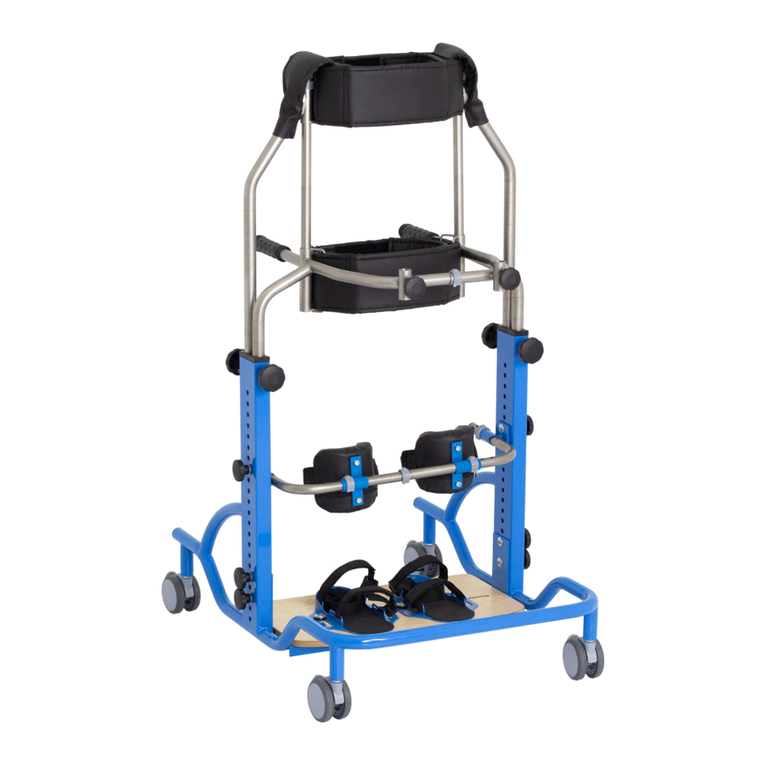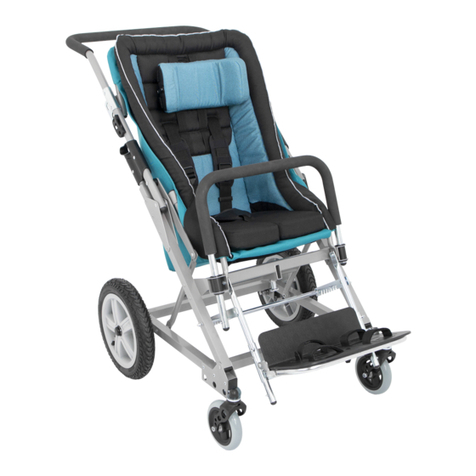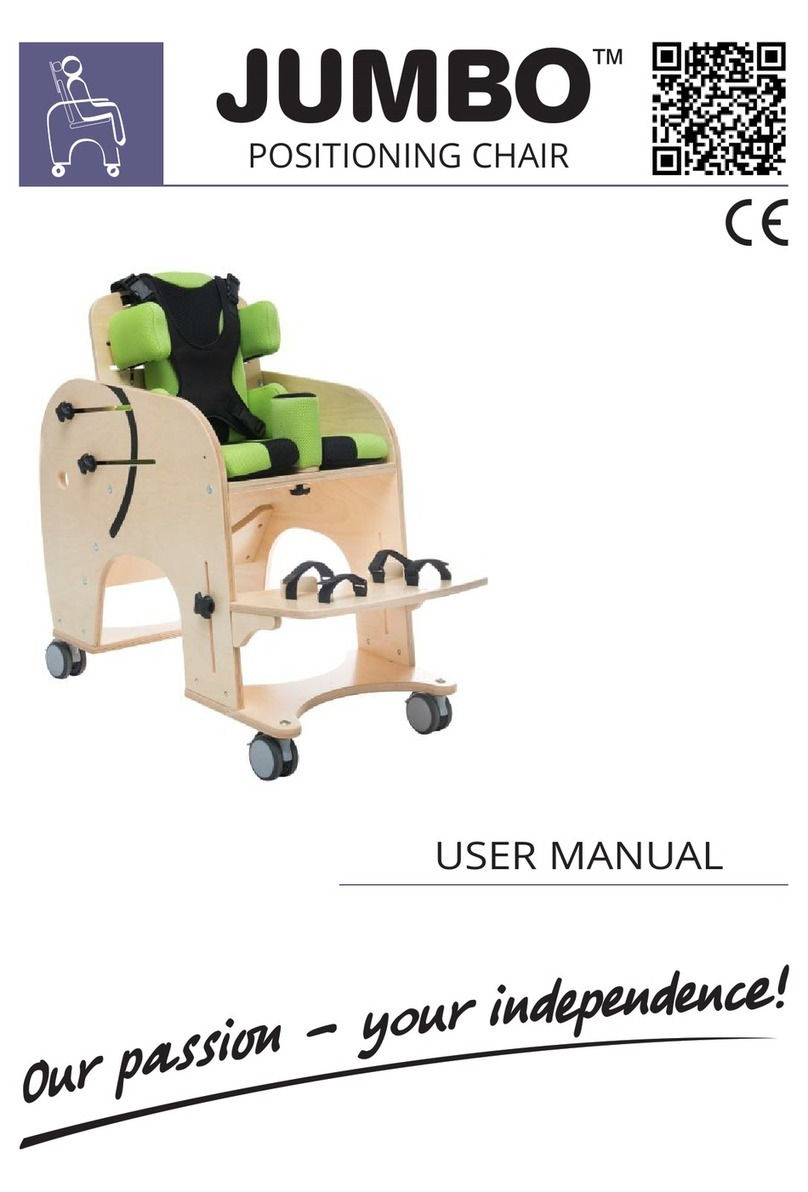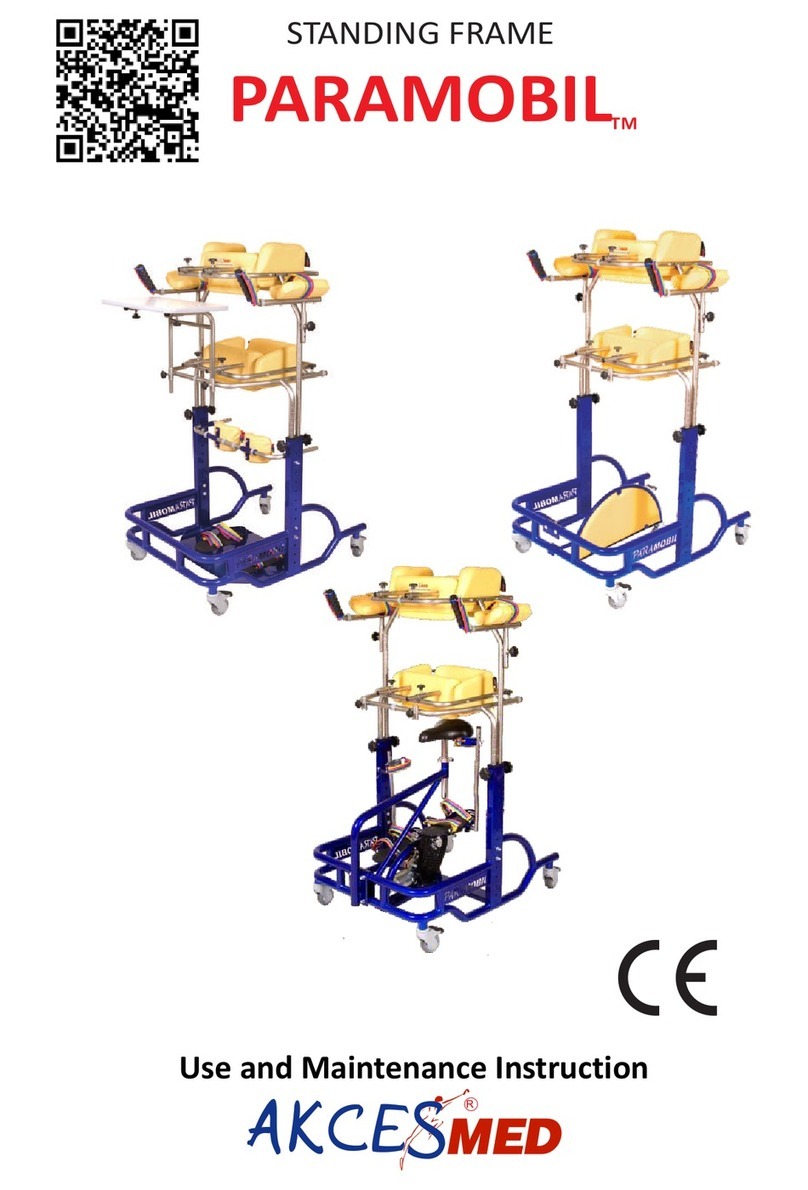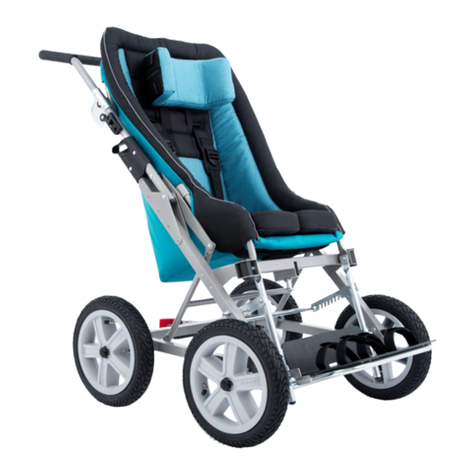
6
TM
astride
2. Indications and contraindications for use
The critical condition of the user is an absolute contraindication to standing upright.
Contraindications:
While standing upright, the user who is in a standing position should be closely monitored. The therapy
should be discontinued in case of such side effects as: turning pale, sweating or fainting, joint strain and
the resulting deformities of\ the body. Further proceeding should be consulted with the medical
specialist or a physiotherapist who prescribed the treatment.
źPain while standing in the standing frame (caused by subluxation or dislocation of the hip joint,
overstretching of soft tissues or excessive pressure). Subluxation or dislocation of the hip joint in the
absence of pain is not a contraindication.
In case of people with impaired cardiovascular system (arterial hypertension at rest above 200/110
mmHg, pulmonary hypertension, cardiac arrythmias, moderate heart valve disease); respiratory system
(unstable asthma) and unstable metabolic disorders, it is necessary to monitor the user while standing in
order to prevent serious complications.
źBone fracture with incomplete union, unless approved by a doctor.
źPostoperative restrictions on joint loading.
People with significant flexion in the hip or knee joints, as well as with contractures in the ankle joint, may
not be able to use the standing frame. Make sure that the position of the user in the standing frame does
not cause excessive pressure or stretching of affected areas of the body. In such cases, standing upright
may be contraindicated until a greater range of motion is achieved in the contracted joints.
Relative contraindications for upright standing are: arterial hypertension at rest above 200/110 mmHg,
pulmonary hypertension, cardiac arrythmias, unstable asthma, unstable metabolic disorders, moderate
heart valve disease.
źAny condition, such as a healing fracture or severe osteoporosis, that makes it impossible to bear
the user's own bodyweight.


